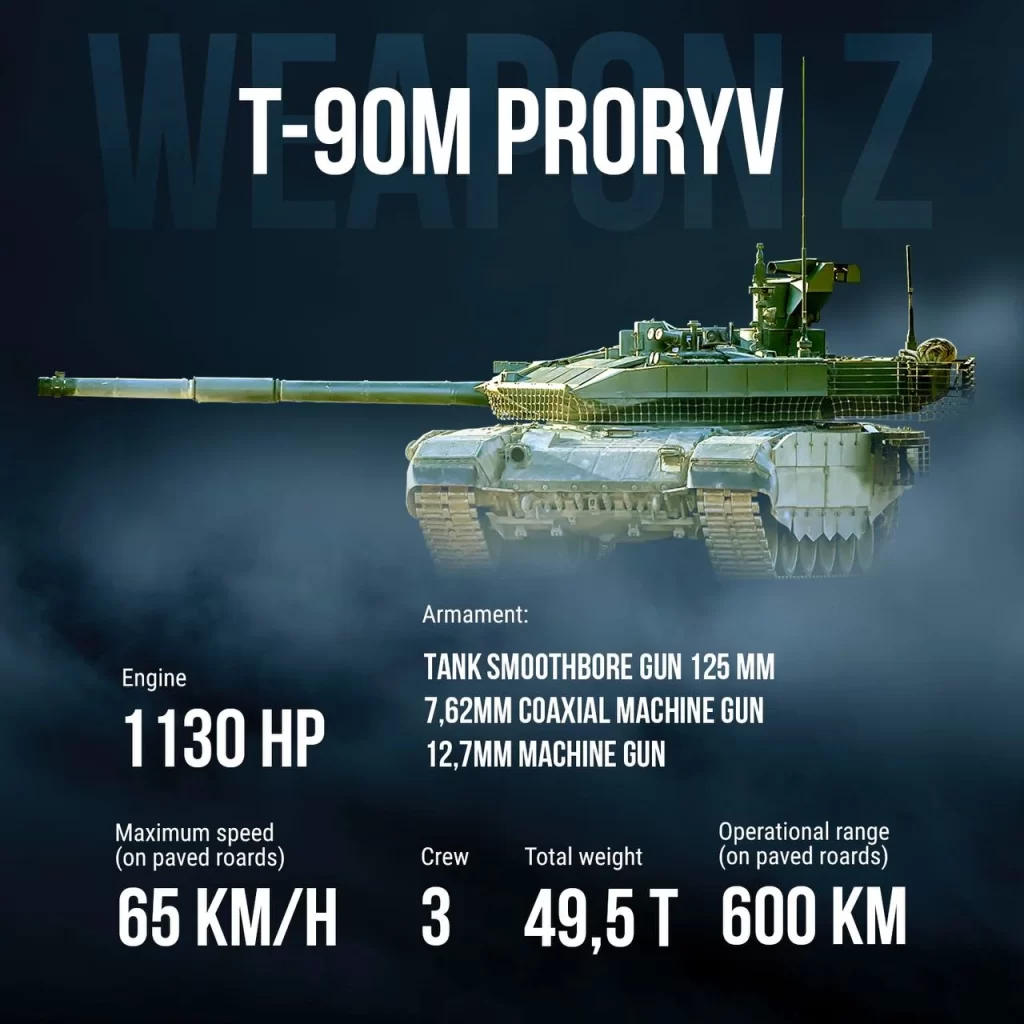Since the fierce Russian-Ukrainian battle began in early 2022, both sides have significantly altered their tank fleets in response to growing threats to their armoured forces. Both sides have significantly altered their tank fleets in response to growing threats to their armoured forces.
One of the most notable steps implemented was the installation of reinforced roofs on their vehicles, which were often outfitted with explosive reactive armour. This improvement was largely intended to improve protection against aerial attacks, including drone strikes, which have become increasingly common in recent years.
The addition of extra armour to tanks, in general, was a common step. Ukraine, with powerful capabilities in producing explosive reactive armour inherited from the Soviet era, used this power to reinforce the defensive capabilities of its Soviet-era vehicles. This was also applied to recently acquired Western tanks, such as the M1A1 Abrams.
Recent videos from the battlefield indicate the increasing longevity of Russian equipment. A significant example is the Russian T-90M tank, which miraculously survived an attack by a Ukrainian drone, revealing important details about these achievements.
The footage revealed damage to the tank’s protection components and metal canopy. Surprisingly, the explosive reactive armour blocks “Kontakt-1” on the protective roof reveal evidence of detonation.
However, the vehicle’s primary build remains largely intact. Despite hints of an attack, the tank appears ready for war. Furthermore, with the low technical maintenance necessary to repair damaged protective systems, the prospect of returning it to serviceability is high.
Despite the T-90M tank’s unusual durability during its battle with the Ukrainian kamikaze drone, the overall picture suggests that tanks, particularly the well-known T-90M, are not invulnerable. Additional armour, such as grids on the turret’s top, can provide some protection, particularly against drones that are not correctly directed.
Take, for example, the T-90M. Its Achilles’ heel is the link between the chassis and the turret, which is vulnerable to kamikaze drones. The battle in Ukraine demonstrated that all deployed tank variants are highly vulnerable to anti-tank missile systems, whether Russian/Soviet or Western in origin.
For nearly two years, Russia has increased tank output. This strategy produces results as French equipment susceptible to embargoes is replaced with Russian-made optical systems. Previously, only the Uralvagonzavod facility in the Sverdlovsk region produced tanks such as the T-72B3M and T-90M. Siberian Omsktransmash is now responsible for the T-80BVM’s regular production.
Speculation over how many new and upgraded tanks these plants can build continues. CNN speculated in April of this year that Uralvagonzavod builds approximately 20 tanks per month. However, a few weeks ago, Defence Express proposed a joint monthly supply of 90 tanks from Uralvagonzavod, Omsktransmash, and other modernisation factories.

Initially, many Western experts criticised the introduction of elevated roofs on military tanks, labelling it a “Coup cage.” However, the protection from drone strikes proven in Ukraine suggests that this technique is here to stay. These structures are now being seen on the Indian and Israeli Army tanks.
The Israeli army implemented this change in its armoured battalions by the end of 2022. This adjustment was implemented in response to tank damage caused by Palestinian militant drone assaults.
The Russian army bought ten T-90M tanks in 2019 with plans to enhance their production. However, as Ukraine escalated, the Russian Ministry of Defence expanded its production and acquisitions. By April 2020, the T-90M had begun to make its presence felt in the Russian army, outperforming all earlier T-90 models, having completed state trials just two months prior.
This top-tier tank has several distinguishing features. It is armed with strong basic armour but considerably improves its defence with the cutting-edge reactive armour “Relikt.” The tank’s survivability is further boosted by improved fire control systems, supplemented by third-generation thermal imaging sights, a proprietary thermal observation device, and a commander-controlled digital display.
The recently installed autoloader and main gun allow T-90M tanks to adapt to longer rounds easily, considerably improving their ability to breach opponent armour. Furthermore, the tank’s robustness has been enhanced by a new protective design of the automatic loading carousel, which separates ammunition from the crew, significantly lowering the chance of internal explosions. Incidents in Ukraine demonstrated that T-90M tanks could resist penetrating blows without generating internal explosions. As a result, the machine garnered high commendation for its successful activities on the Ukrainian front.
Interestingly, by the end of 2022, other tanks with an improved armour design similar to the T-90M were engaged in combat, particularly the far more frequent T-72B tank. These upgrades spurred rumours that the repaired tanks would be renamed T-72B4.
On February 15, Russian President Vladimir Putin praised the T-90M tank as the greatest in the world during a visit to the Uralvagonzavod facility. Both Russian tank commanders and rivals recognise the tank’s advantages.
“The T-90M ‘Breakthrough’ is the best tank in the world, without any exaggeration. And our guys, the tank crews, say the same, and the enemy acknowledges it too. The best machine in the world,” the Russian president said.
